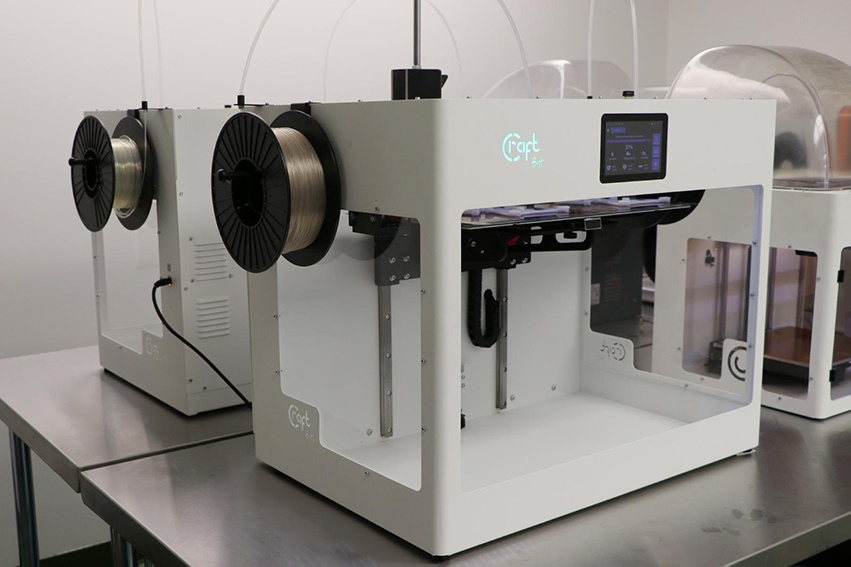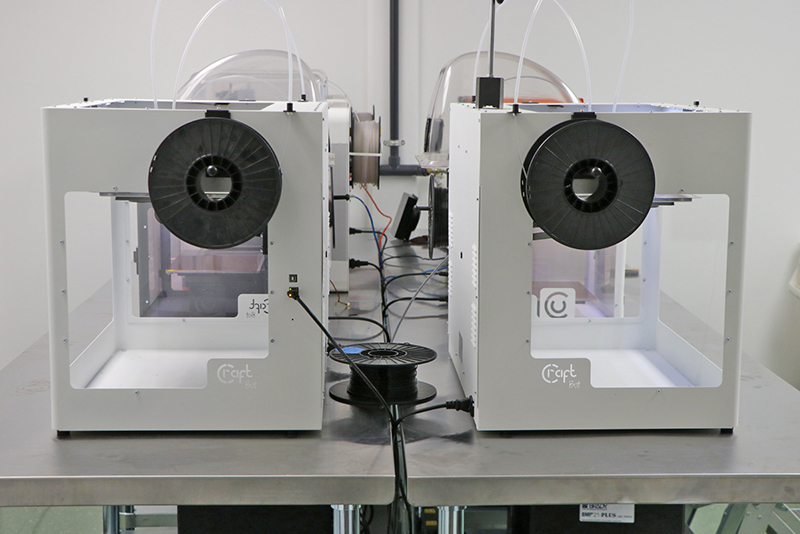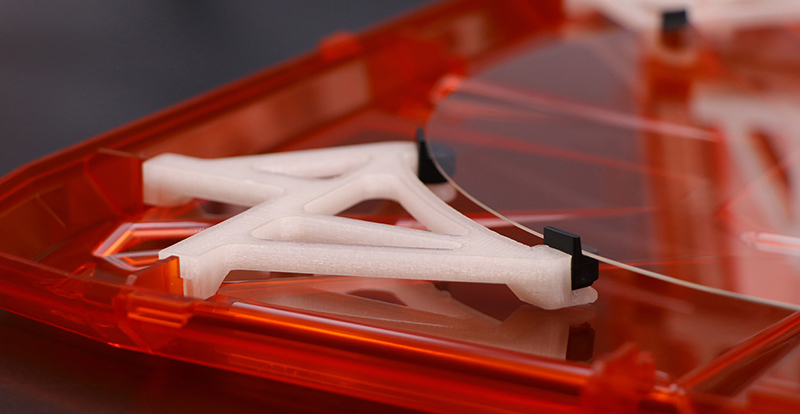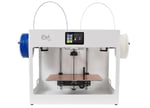For a company in the plastic parts industry, it isn’t a huge leap to enter 3D printing. It’s almost a natural path. But when your plastic parts need to be made from your own proprietary plastic for a clean-room environment in the semiconductor industry, your journey to adopting additive manufacturing gets complicated.
For Pozzetta Products, a leading American specialty packaging manufacturer based in Colorado, 3D printing was something that they felt they just had to do. “We’re in the plastics industry. We make parts,” says Carl Hart, the company’s manager of corporate engineering. “We didn’t have a very clear picture of how it would be used. We just bought our first 3D printers with plans to make prototypes.”
The Pozzetta team had outsourced prototypes to check fit, form, and function during product design, but bought their first 3D printer to offset the cost of prototyping. Within months, Pozzetta had a collection of printers from a range of manufacturers, including one from Hungarian manufacturer Craftbot.
Case Study At A Glance
There was a lot to prototype at Pozzetta. The company supplies critical packaging to safely handle and transport semiconductor wafers and other sensitive components. There’s also an abundance of tooling and fixtures involved in the process. But it didn’t take long for Hart to realize that their 3D printers were up to the task of creating functional end-use parts, too. His team printed tooling fixtures and tooling pads; parts that would have otherwise been machined. “Using functional parts is really where we found a ton of value. We still do a lot of functional parts,” says Hart.Following on from this success, they then began to think about printing other types of fixtures that they still injection mold – specifically their clean room fixtures, which presented a new set of challenges.
Introducing Printed Parts to a Cleanroom Environment

“There are a lot of steps that semiconductor wafers and photomasks must go through inside a clean room,” says Hart. Not only are electrostatic discharge and contamination essential considerations, but clean room fixtures must be made from approved materials. Pozzetta’s customers need to know the exact properties of all fixture materials inside their clean rooms.
“We couldn’t buy off-the-shelf filament that was more or less ‘clean room approved’,” Hart explains. The semiconductor industry’s standards are higher than that. This is why Pozzetta has its own proprietary engineering grade materials for all of its injection molding. If only they could find a way to 3D print with one of their static safe plastics?
This is when Pozzetta Products decided to get into the filament business.
In collaboration with Caroba Plastics, a Pozzetta sister company specializing in custom plastic injection molding, they produced filament using Pozzetta proprietary engineered materials, beginning with an ESD-safe translucent ABS.
“We bought an extruder and started converting our proprietary materials into filament and doing test prints with them, and sending them out [to select customers to test custom solutions] and it was very well received,” says Hart. But it wasn’t a simple task to get to this point.
“Not only were we testing production capabilities with it, but we had to do a lot of volume printing. For us, it was trial and error,” Hart explains.
How Pozzetta Products Chose the Right 3D Printer?

When choosing a 3D printer for production, an important factor for Hart was the ability to run not only the company’s proprietary filament, but whatever filament he wanted to. “We knew when we got into making our own filament that we didn’t want to have to bypass the machine in order to run the filament that we wanted to run,” he explains.
Although many printers can accommodate third-party filaments, they often print best using the manufacturer’s filament.
“Over the course of the first couple of weeks it was glaringly obvious to everybody that this little printer sitting over in the corner was getting almost no attention in terms of requiring maintenance. It didn’t jam, it just ran,” says Hart. It was their Craftbot 2. “So we bought another one [a Craftbot Plus] and had exactly the same results. Those two became our production printers.”
Then, when Pozzetta Products hit its production capacity they decided to buy two more models, Craftbot FLOW IDESs. Hart runs his four Craftbot production printers full time, 24 hours a day, 7 days a week, all using the company’s own static safe translucent ABS filament.
“We thought that if we spent $50,000 on a large capacity 3D printer that it was going to be robust enough, and that simply was not the case,” Hart says. “At least right now and from our experience, price does not seem to necessarily dictate the quality of the printer. Our first two Craftbots were at the lower end of the spectrum and they ran beautifully.”
3D Printing to Lower Cost

Pozzetta Products completes around 50 prints a day, mostly inserts for molded boxes that hold custom-sized semiconductor wafers, photo masks, and optics. Pozzetta uses standard sized injection molded boxes and adds custom 3D printed inserts. Carl explains why 3D printing is great for this application: “When you’ve got a very small fabricator or a university, for example, and they need 10 or 20 boxes, it doesn’t make a lot of sense to build an injection mold for a very low number of inserts.”
In fact, each product requires eight different corner supports inside the box, so to build tooling for eight different corner supports with the size and complexity of those parts, you could easily be looking at an $80,000 tooling investment, up front, Hart explains.
There are some drawbacks of this production method though, specifically volume. “If somebody comes to me and says “I need 1,000 boxes’, well that’s 8,000 prints. I can’t do that very quickly. I can mold 1,000 boxes, but I can’t print 8,000 inserts in a month.”
Pozzetta is still discovering the strengths and drawbacks of production 3D printing, but the benefits have been clear: easy prototyping, faster and cheaper tooling, and the ability to offer their customers faster service and a lower cost, which increases their industry competitiveness.
Pozzetta’s ESD safe, translucent ABS filament is now available through Peak 3D Products (www.peak3dproducts.com).
License: The text of "Pozzetta & Craftbot Tackle 3D Printing for Cleanroom Environments" by All3DP Pro is licensed under a Creative Commons Attribution 4.0 International License.
CERTAIN CONTENT THAT APPEARS ON THIS SITE COMES FROM AMAZON. THIS CONTENT IS PROVIDED ‘AS IS’ AND IS SUBJECT TO CHANGE OR REMOVAL AT ANY TIME.
